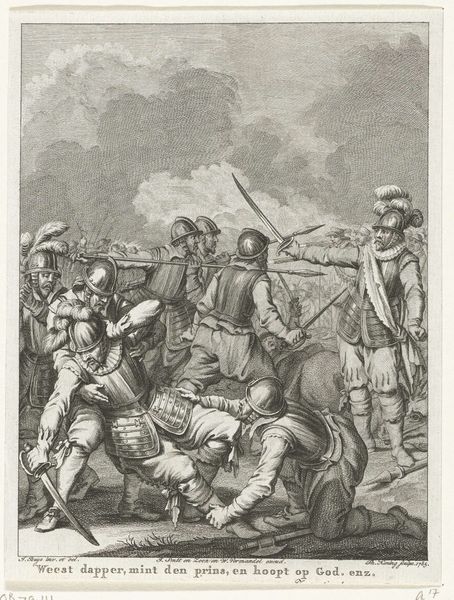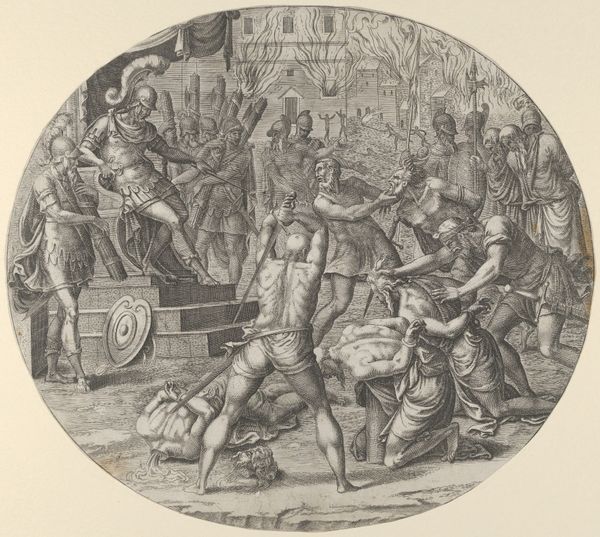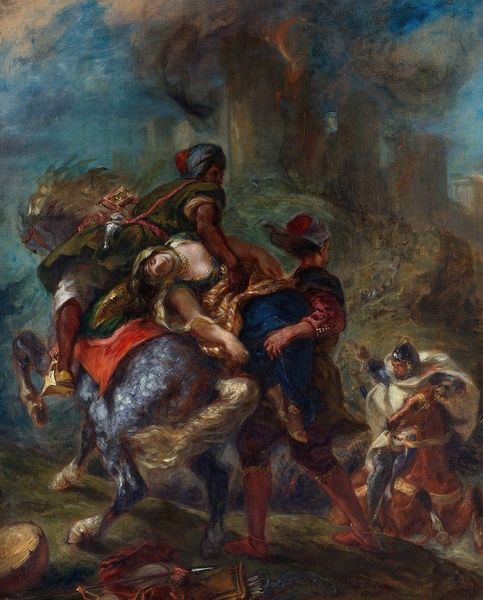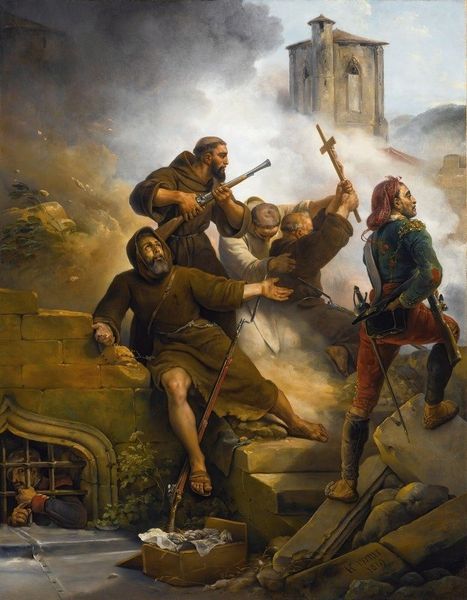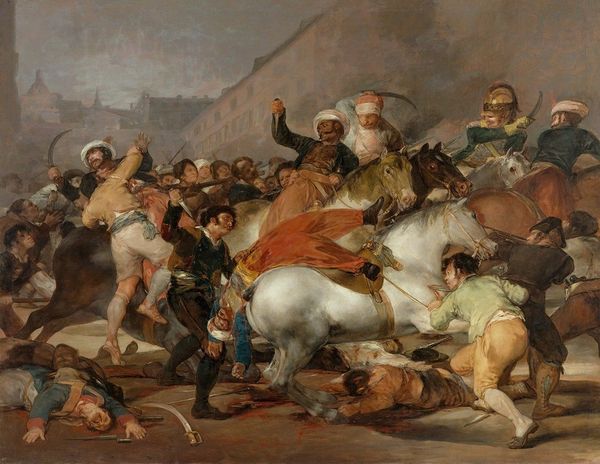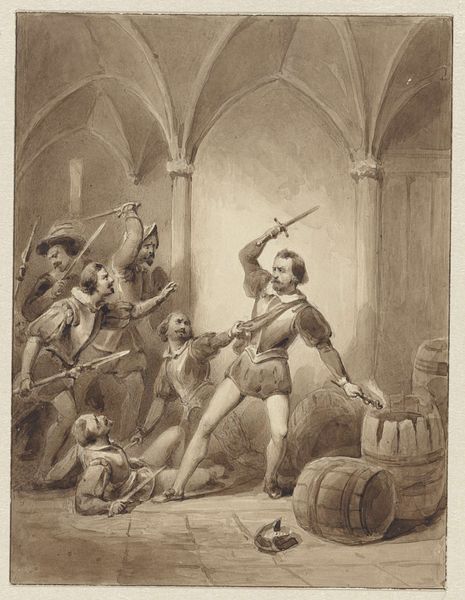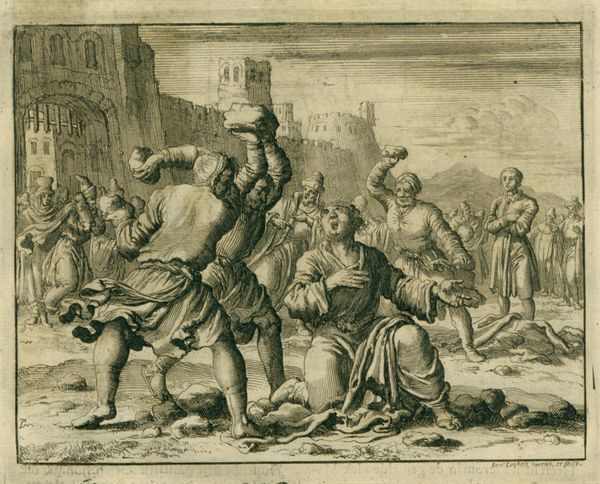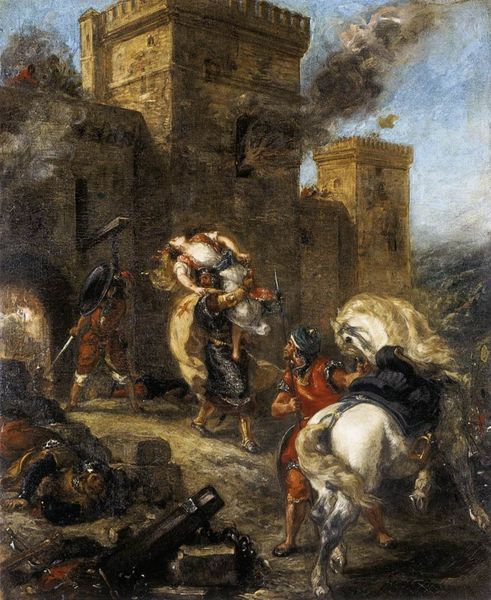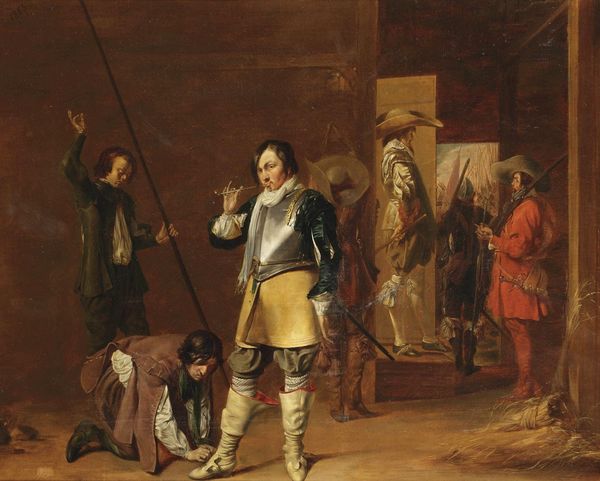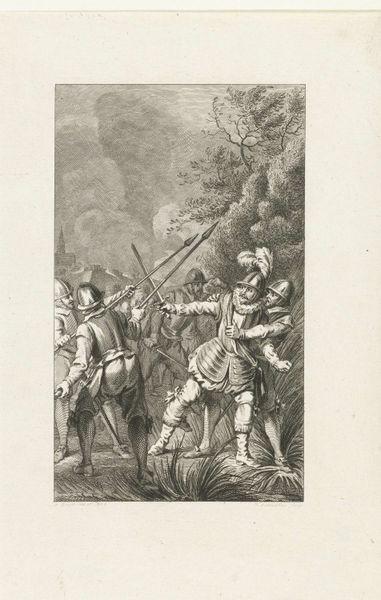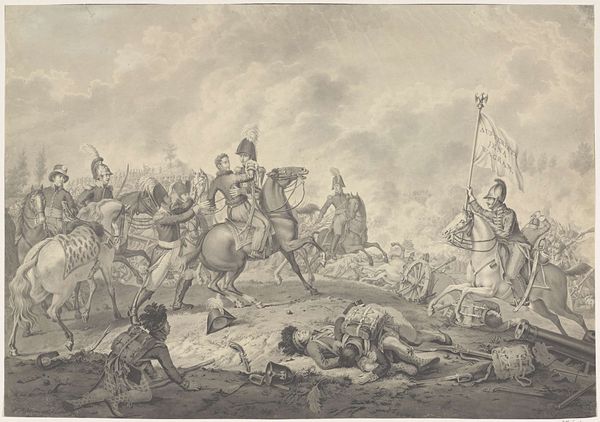![[title not known] by Robert Smirke](/_next/image?url=https%3A%2F%2Fd2w8kbdekdi1gv.cloudfront.net%2FeyJidWNrZXQiOiAiYXJ0ZXJhLWltYWdlcy1idWNrZXQiLCAia2V5IjogImFydHdvcmtzLzcyMmVjMzcyLWJlNzktNDdhMS05ZDlmLTIyN2RiYTQ5N2RkYy83MjJlYzM3Mi1iZTc5LTQ3YTEtOWQ5Zi0yMjdkYmE0OTdkZGNfZnVsbC5qcGciLCAiZWRpdHMiOiB7InJlc2l6ZSI6IHsid2lkdGgiOiAxOTIwLCAiaGVpZ2h0IjogMTkyMCwgImZpdCI6ICJpbnNpZGUifX19&w=3840&q=75)
Dimensions: frame: 795 x 1660 x 112 mm support, each: 241 x 203 mm
Copyright: CC-BY-NC-ND 4.0 DEED, Photo: Tate
Curator: The composition certainly evokes a feeling of dusty drama. Everything seems bathed in a sepia tone, like a memory from a play. Editor: Robert Smirke painted this scene, now in the Tate collection. Smirke, born in 1752, was known for history paintings and illustrations, often tapping into literary narratives, particularly scenes from Don Quixote. Curator: Oh, definitely Quixote! The defeated knight at his feet, the crowd looking on with a mix of shock and amusement. It's theatrical, isn't it? Like a stage production captured on canvas. Editor: Absolutely. And it speaks to the 18th-century fascination with romantic, chivalric tales, but also the rise of the novel and its impact on visual culture. Smirke was shrewd in aligning himself with popular taste. Curator: It makes me wonder, though, did Smirke see himself in Quixote at all? Battling against the windmills of artistic convention, perhaps? Editor: That’s an interesting point. The image certainly encapsulates a moment of power, but also absurdity. Smirke, positioning himself within or against the establishment? The painting invites such readings, I think. Curator: It's funny, isn't it? How a single image can hold so many stories, both the one it depicts and the one it quietly implies. Editor: Precisely. It is a testament to how art intersects with literature, politics, and personal reflection, leaving us with enduring questions.
